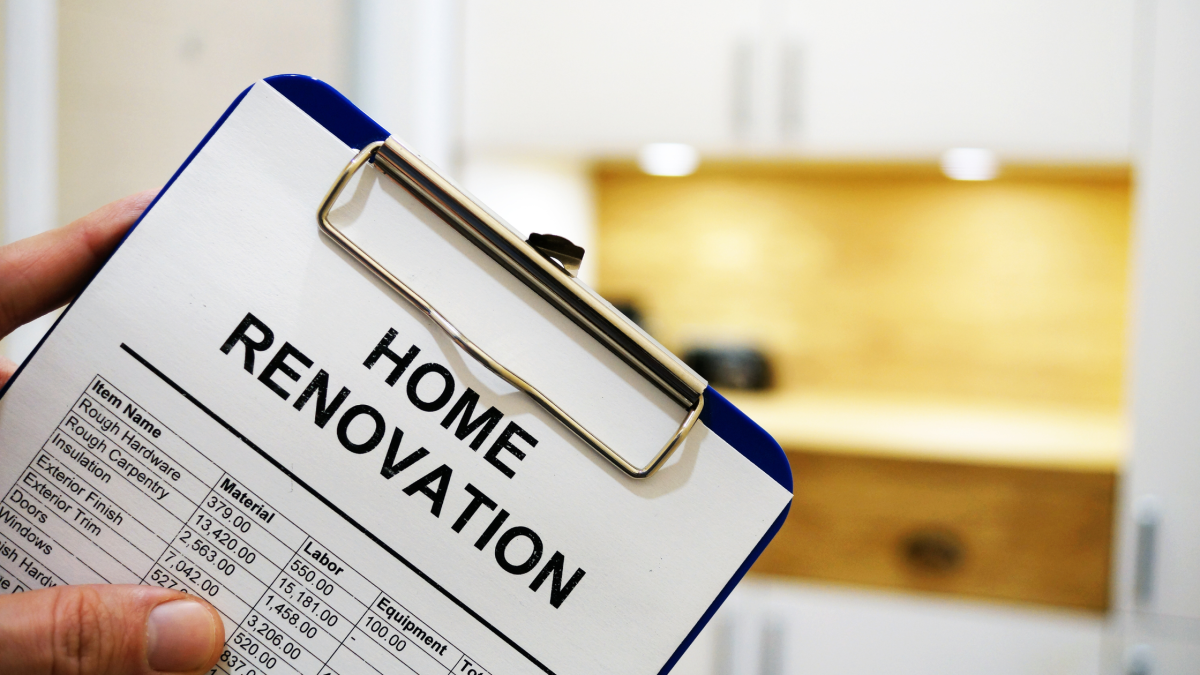Basement Renovation: Transforming Your Space Efficiently

Basement renovation can transform an underutilized space into a valuable and functional part of your home. With proper planning, a basement remodeling project can maximize the overall potential of your property. By tackling key components such as lighting, layout, and design, you can create a personalized space that caters to your unique needs and preferences.
Understanding the fundamentals of basement renovation is crucial for achieving a successful remodel. Factors such as structural concerns, energy-efficiency, and budgeting can greatly impact the outcome of your project. Whether you decide to tackle the renovation yourself or hire professionals, it is important to prioritize aspects like noise reduction, layout planning, and design tips to ensure the finished space exceeds your expectations.
Key Takeaways
- Basement renovations can add value and functionality to your home by tackling lighting, layout, and design.
- Considering structural concerns, budgeting, and energy efficiency contributes to a successful remodeling project.
- Weigh the benefits of DIY versus hiring professionals, and prioritize noise reduction and layout planning for an exceptional finished space.
Understanding Basement Renovation

Renovating your basement can be a valuable and worthwhile investment in your house. A well-executed basement renovation can increase both the usability of your home and its resale value. In this section, we will discuss the key aspects of basement renovation, so you can have a clear understanding of the process.
When starting your basement renovation project, it’s crucial to first assess the current state of the area. Consider factors like moisture levels, insulation, and any existing structural issues. You should also evaluate your home’s current electrical and plumbing systems to determine if they need to be updated or expanded to accommodate your renovated basement.
Once you have a clear understanding of the existing conditions, plan how you want your finished basement to function. Will it be a space for entertaining, a play area, or an additional living area? Consider your personal goals and priorities when designing the layout and selecting the materials to transform your basement into a practical and enjoyable space.
Here are some key elements to consider when planning your basement renovation:
- Insulation: Proper insulation will ensure your basement maintains a comfortable temperature and stays energy-efficient. Also, good insulation can reduce moisture buildup and help mitigate potential mold issues.
- Flooring: Selecting the right flooring material is essential for both appearance and functionality. Durable and water-resistant options, like vinyl or laminate, are ideal choices for basements.
- Lighting: Utilize natural light where possible, but also plan for an adequate mix of ambient, task, and accent lighting to make your basement feel open, lively, and inviting.
- Ventilation: Proper ventilation is necessary to maintain good air quality in your basement, so you need to make sure your HVAC system is equipped to handle the additional space.
- Plumbing: If you decide to add a bathroom or kitchen space to your basement, be prepared to make adjustments to your home’s plumbing and waste lines.
As you embark on your basement renovation project, don’t hesitate to consult with professionals if you need guidance or assistance. This could include architects, interior designers, or specialized contractors who can ensure the entire process goes smoothly and meets building codes and regulations.
Remember, being well-informed and adequately prepared can help you achieve a successful, valuable, and enjoyable basement renovation.
Key Components to Consider
Walls
When renovating your basement, it is crucial to address the walls, as they contribute to the overall appearance and insulation of the space. If your basement has concrete or cinder block walls, you may opt for framing with wood studs or metal studs, followed by installing drywall. Insulating the walls is essential for energy efficiency and maintaining comfortable temperatures. Choosing moisture-resistant materials and a proper vapor barrier will help prevent dampness and mold growth. Keep structural requirements in mind if you’re planning to add new windows or doors, and consult a building professional to ensure the surrounding walls can handle the increased load.
Ceiling
The ceiling plays a significant role in both aesthetics and functionality. A suspended or drop ceiling is a popular choice, as it allows for easy access to electrical, plumbing, and ductwork. You can select from various tile styles to suit your preferences. Another option is a drywall ceiling, which offers a smooth and seamless appearance. Should you go for a drywall ceiling, be sure to include proper access panels for essential systems, like electrical and plumbing. Additionally, consider soundproofing measures to minimize noise traveling between floors.
Flooring
Selecting appropriate flooring for your basement is vital to creating a comfortable and inviting space. Concrete floors may be cold and hard, so adding a subfloor is recommended to increase insulation and comfort. Carpeting is an ideal choice, as it provides warmth and coziness. However, it is important to verify that your basement is adequately sealed and waterproofed to avoid damage and must from dampness. Alternatively, you may consider laminate, vinyl, or tile flooring options. Many of these materials are water-resistant and can handle basement moisture better than carpets. Remember, if you opt for a rigid flooring material, consider adding area rugs for added comfort and style.
Creating More Light and Space
Windows and Natural Light
One of the main concerns when renovating a basement is how to maximize natural light. To achieve this, consider installing larger windows or even window wells. By allowing natural light to filter in, you create a more inviting atmosphere and make your basement space feel larger. Additionally, using light colors and materials, such as white or pastel-colored paint and furniture, will help reflect light and make the room feel more spacious. Don’t forget to place mirrors strategically to boost the amount of light and create an illusion of space.
Lighting Options
The right type of lighting can dramatically influence the brightness and mood of your basement. Create a comfortable, well-lit space by incorporating different types of lighting options. Some options to consider:
- Recessed Lighting: Recessed lights, also known as can lights, are a popular choice for basement renovations. Fitted into the ceiling, these fixtures provide focused light from above, making them a great option for seating, dining, and crafts areas. Their downlighting function offers bright light while minimizing shadows and glare.
- Pendant Lights: For areas that require more focused lighting, such as a workspace or bar area, pendant lights are an excellent choice. Suspended from the ceiling, pendant lights not only provide direct lighting but can also add a touch of style to your basement renovation.
When designing your basement lighting, make sure to have a mix of ambient, task, and accent lighting to create a balanced and functional space. Remember that your lighting choices should not only provide adequate illumination, but they should also complement the overall design and decor of your renovated basement.
Planning a Functional Layout
Identifying Zones
When planning your basement renovation, it’s essential to identify the different zones within the available space. Think about how you want to utilize the basement and what needs you have. For example, you may want to create a family room, home office, guest room, home gym, playroom, in-law suite, game room, or laundry room. By identifying these zones, you can create a layout that maximizes usable space and meets your needs.
To start, make a list of the various zones you’d like to incorporate in the space. Using graph paper or a design software, create a rough sketch of the basement, and divide it into the identified zones. Ensure there’s a natural flow between these areas, and they don’t interfere with each other. You may find it helpful to place zones that require plumbing, like a laundry room, close to existing pipes to save on renovation costs.
Selecting Purposeful Furniture
Choosing the right furniture for your basement renovation is crucial in creating a functional layout that meets your needs. Keep in mind the purpose of each zone and select furniture pieces that will optimize the functionality of the area.
- Family room: Opt for comfortable seating like sofas and lounge chairs. Choose pieces that are easily rearranged to accommodate different activities, such as movie nights and social gatherings.
- Home office: Consider a sturdy desk, ergonomic chair, and storage solutions such as bookshelves and filing cabinets. Ensure there’s sufficient lighting for working comfortably.
- Guest room: A comfortable bed, wardrobe, and nightstand are essential. Including a small seating area for relaxing adds an extra touch for guests.
- Home gym: Select durable gym equipment suitable for your fitness goals. Look for options that can be easily stored or folded away when not in use to maximize space.
- Playroom: Choose easy-to-clean, child-friendly furniture, and plenty of toy storage solutions.
- In-law suite: A combination of bedroom and living room furniture will create a comfortable living space for your in-laws or other extended-stay guests.
- Game room: Opt for furniture such as a pool table, gaming chairs, or a bar setup, depending on the activities you want to include in the space.
Remember, when selecting furniture, consider the size of each zone and the amount of available space. Choose versatile pieces that can be easily moved or reconfigured to adapt to your changing needs. By planning a functional layout and selecting purposeful furniture, you’ll create a comfortable and enjoyable space that maximizes the potential of your basement renovation.
Design and Decor Tips
Choosing Aesthetic Themes
When renovating your basement, start by selecting an aesthetic theme that complements the overall design of your home. Consider your personal preferences, hobbies, and the intended function of the space to guide your decision. Browse through design magazines, websites, or even use TV shows for inspiration. Remember to choose light, neutral paint colors like Agreeable Gray or Accessible Beige by Sherwin-Williams to make the space feel inviting and open.
Some popular basement themes are:
- Minimalist
- Industrial
- Rustic
- Modern
- Home theater
- Wine cellar
Once you have chosen a theme, be confident and consistent in all your design choices, from textures to color palettes. This will create a cohesive, well-designed space.
Incorporating Storage Options
Storage is an essential component of any basement remodel. A well-organized basement will make it functional and enjoyable for you and your family. Start by evaluating your storage needs and setting a realistic goal for the organization. Be creative with your storage solutions, such as built-in cabinets, bookshelves, or hidden storage compartments.
Here are a few storage ideas to consider:
- Shelving: Install wall-mounted shelves or freestanding units to display books, collectibles, or decorative items.
- Cabinets: Use cabinets for storing items that need to be concealed, such as gaming consoles, crafting materials, or work tools.
- Closets: If space allows, add a closet for additional storage and organization.
- Under stairs storage: Utilize the space beneath stairs by installing custom cabinetry, shelves, or even a small workstation.
- Hidden storage: Incorporate hidden storage spaces within seating, tables, or walls for a clean and decluttered look.
Remember to keep your chosen aesthetic theme in mind while selecting storage options. By combining the right theme and storage solutions, you can create a beautiful and functional basement space that you’ll enjoy for years to come.
Budgeting for Your Project
When planning a basement renovation, it’s crucial to establish a realistic budget that accounts for both your financial limitations and the potential return on investment (ROI). According to HomeAdvisor, the average cost to renovate a basement is $30 to $75 per square foot, depending on the materials you use and the square footage of the space.
Before you begin the renovation process, carefully assess your available funds and prioritize the projects you want to tackle. If you need to make some adjustments, start by focusing on the essentials first and postponing the less urgent projects for later. This will help you avoid overspending and ensure that you get the most value for your money.
To set an appropriate budget, consider the following factors:
- Home value: Aim for a basement renovation budget that accounts for about 10-15% of your home’s value. For example, if your home is worth $300,000, you could safely budget between $30,000 and $45,000. This amount should improve the resale value of your home while preventing overspending without a proper return on your investment.
- Materials and labor costs: Research the cost of materials and labor in your area to get an accurate estimate for your project. Keep in mind that the more high-end materials you choose, the higher your costs will be. Opt for affordable yet good-quality materials to get the best bang for your buck.
- Contingency fund: It’s always wise to include a contingency fund in your budget to cover any unforeseen expenses or challenges that may arise during the renovation process. Aim for a contingency fund of around 10-20% of your total budget.
Once you’ve established a budget, track your expenses carefully to ensure you stay within your financial limits and avoid any unpleasant surprises down the line. By carefully planning and being financially responsible, you can successfully create the basement of your dreams without breaking the bank.
Handling Structural Concerns
Moisture and Insulation
When renovating your basement, it’s important to address moisture and insulation concerns. Excess humidity and condensation can lead to poor air quality and even structural damage. To combat these issues, ensure to seal any air leaks and gaps in the basement. Additionally, upgrading your insulation can also be helpful in maintaining a comfortable environment. In particular, consider using spray foam insulation, which offers higher R-value per inch and creates an effective air barrier. Don’t forget to run a dehumidifier to regulate humidity levels and keep the space dry.
Ductwork and HVAC
Another key factor in your basement renovation is the integration of adequate ductwork and heating, ventilation, and air conditioning (HVAC) systems. Properly planned ductwork can make a significant difference in the efficiency and comfort of your newly renovated space. Start by inspecting your current HVAC system and ductwork for any issues. If necessary, consult with a professional to ensure your existing system can handle the added load of your renovated basement.
During the renovation process, pay close attention to the placement and routing of ducts, particularly around load-bearing elements, such as posts, beams, and columns. Ensuring proper airflow and ventilation will not only keep your basement comfortable but also help to maintain a healthy living environment. If upgrading your HVAC system is needed, consider investing in a more energy-efficient model, as it could save you money in the long run.
Adding Additional Features
When renovating your basement, consider adding additional features that can enhance the functionality and value of your space. Here are some suggestions for areas to focus on.
Including a Bathroom or Kitchen
Adding a bathroom or kitchen to your basement can significantly increase its functionality and convenience. An extra bathroom gives guests or family members more privacy, while a basement kitchenette or wet bar can provide an additional spot for entertaining and hosting parties. When planning the layout, consider the plumbing and electrical requirements for these new features. Some steps to follow:
- Determine the optimal location for the bathroom or kitchen based on the existing plumbing and electrical systems.
- Choose appliances and fixtures that fit the space and your budget.
- Select appropriate flooring and wall materials that can handle moisture and humidity.
- Consult a professional plumber or electrician to ensure the project complies with local regulations.
Setting Up Entertainment and Sports Zones
Your basement can be an ideal place for creating entertainment and sports zones, such as a home theater, game room, or fitness area. Consider the following when planning these spaces:
- Home Theater: Opt for blackout curtains, comfortable seating, and a large screen or projector. Don’t forget to invest in a quality sound system for an immersive experience.
- Game Room: Allow ample space for popular activities like pool or ping pong. Include clever storage solutions to keep everything organized.
- Fitness Area: Utilize the cooler basement temperature for your workout routines. Ensure there’s enough space for exercise equipment, like treadmills or weight benches, and consider installing mirrors to enhance the space.
Creating an Income Property
Transforming your basement into an income property, such as an apartment or Airbnb rental, can be a smart investment. Keep these points in mind:
- Ensure the space meets local building codes and regulations for rental properties.
- Plan separate entryways and private outdoor areas for tenants, if possible.
- Invest in durable and easy-to-maintain finishes and appliances for both the kitchen and bathroom.
- Prioritize sound insulation for increased comfort and privacy.
By focusing on these areas when renovating your basement, you can create a functional and enjoyable space suited to your needs and interests.
Do-It-Yourself vs Hiring Professionals
When embarking on a basement renovation project, you have two main options: tackling the job yourself (DIY) or hiring professionals. Both approaches have their pros and cons, and the best choice depends on your specific situation and skillset.
DIY Basement Finishing: If you possess strong DIY skills, you may want to consider finishing your basement on your own. The most significant advantage of going this route is the potential cost savings. Removing labor costs and controlling the budget for building materials can make DIY projects more affordable. Additionally, you have complete control over the project timeline and can take pride in the work you’ve accomplished.
However, DIY also has its downsides. If you’re inexperienced with construction, you could make mistakes that could lead to significant issues down the road, such as improper electrical work or plumbing leaks. Furthermore, finishing a basement can be time-consuming and physically demanding, which may interfere with your daily life.
Here are some things to consider when deciding on a DIY basement renovation:
- Budget constraints
- Your construction skills and experience
- Time availability
Hiring Professionals: Engaging expert help for your basement renovation ensures that you receive assistance from skilled professionals who understand local building codes and possess the necessary equipment. They can also provide a more accurate estimate of the project’s timeline and offer guarantees on their work.
Though hiring professionals usually come with a higher price tag, you can often save both time and effort. The assurance of quality workmanship reduces the risk of issues or costly repairs in the future. Also, contractors typically have relationships with suppliers, which can facilitate purchasing materials at a reduced cost.
Some factors to consider when hiring a professional include:
- Your budget
- Project timeline
- Experience and reputation of the contractor
In conclusion, the decision between DIY and hiring professionals for your basement renovation boils down to your personal preferences, skillset, and budget. Each option has its advantages and drawbacks, and carefully evaluating your unique needs will help you make the best choice for your project.
Prioritizing Energy Efficiency and Noise Reduction
When renovating your basement, it’s essential to prioritize energy efficiency and noise reduction. Not only will these improvements make your space more comfortable, but they can also save you money on utilities and increase your home’s overall value.
To achieve energy efficiency, consider implementing better insulation throughout your basement. Proper insulation will help regulate the temperature, reducing the need for heating and cooling systems. It’s a good idea to examine your basement’s windows and doors as well, ensuring they’re well-sealed to prevent drafts and heat loss. Upgrading appliances in your basement, such as heating systems, washers, and dryers, to energy-efficient models can further decrease energy consumption.
Incorporating energy-efficient lighting is another aspect to consider. Opt for LED lights, as they consume less energy and have a longer lifespan compared to traditional incandescent bulbs. You might also want to consider installing dimmer switches or motion sensor lights, which can save energy by only being used when necessary.
For noise reduction, soundproofing your basement can significantly mitigate noise pollution from both inside and outside the house. Start by adding sound-absorbing materials like acoustic panels and foam insulation to walls and ceilings. You can also soundproof your basement floors by installing a thick underlayment, such as rubber or mass loaded vinyl, beneath your choice of flooring material. Don’t forget to insulate and seal any gaps around pipes, ducts, and wiring to prevent noise from traveling through these channels.
Lastly, selecting the appropriate doors and windows is vital for effective noise reduction. Look for products with high sound transmission class (STC) ratings. These materials are specifically designed to significantly block out noise from entering or leaving the space.
By prioritizing energy efficiency and noise reduction in your basement renovation, you’ll create a comfortable, functional space that also benefits the environment and your wallet. And remember, every improvement you make contributes to a more sustainable and enjoyable living experience in your home.
Frequently Asked Questions
What are some cost-effective basement design ideas?
To make your basement renovation cost-effective, consider an open concept layout which creates a versatile space. You can incorporate multipurpose furniture that can be easily moved or transformed for various purposes. Opting for energy-efficient lighting and insulation can also save you money in the long run. Remember to prioritize your desired features, focusing on what will add the most value and functionality to your space within your budget.
How do you calculate the cost of a basement renovation?
Calculating the cost of a basement renovation involves considering various factors. Determine the current state of your basement, the proposed design, and desired features. Research prices for necessary materials, labor, and permits. Speak with multiple contractors to gather accurate quotes and compare price points. Keep in mind that unforeseen expenses may arise, so consider including a contingency budget.
What essential steps should be taken when remodeling a basement?
When remodeling your basement, start by assessing its condition and identifying any structural or moisture issues. Develop a detailed plan and design layout that suits your needs and budget. Obtain necessary permits from your local government. Hire a reliable contractor or decide if you’ll be handling the project yourself. Ensure that all electrical, plumbing, and insulation work is in compliance with local building codes.
How can I finish my basement on a limited budget?
Finishing your basement on a limited budget is easy with some thoughtful planning. Prioritize essential elements, such as insulation, waterproofing, and adequate lighting. Utilize affordable materials and consider completing the project in phases, tackling the most crucial aspects first. Keep an eye out for discounts and sales, and don’t be afraid to invest some time in DIY projects to minimize labor costs.
Is it worth investing in a basement renovation?
Investing in a basement renovation generally adds value to your home and provides additional functional living space. A well-designed basement can serve multiple purposes, such as a home office, entertainment area, or guest room. Consider the potential return on investment and the overall impact on your home’s resale value to determine if a basement renovation is the right choice for you.
What are some small basement renovation ideas?
For small basements, focus on maximizing the space’s potential. Utilize vertical storage options such as shelving or wall-mounted cabinets. Use light colors and efficient lighting to create an illusion of spaciousness. Incorporate multifunctional furniture, and consider creating zones for different activities to make the most of your small basement.






